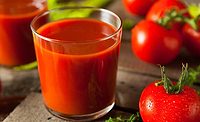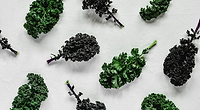BIZTRACKS
Scientists Develop Formulation That Boosts Antimicrobial Properties of Natural Hand Barrier

Image provided by Kao Corporation
Scientists from Kao Corporation recently discovered the mechanisms by which the natural human hand barrier can fight off pathogens, and have leveraged this information to develop a novel, long-lasting skin coating agent that boosts the antimicrobial properties of the hand barrier. This development opens the doors for new hand hygiene solutions that could potentially help food handlers prevent cross-contamination.
In 2021, researchers from Kao Corporation found lactic acid to be the main active component of the natural hand barrier and elucidated the mechanisms by which the hand barrier helps kill pathogens. Specifically, sweat causes lactate to accumulate on the skin of the hands, where the low surface pH converts lactate into lactic acid. The relatively high temperature of the hands disrupts the membrane of microbes and makes them permeable to lactic acid. Once inside a pathogen, lactic acid transforms back into lactate and releases a proton that lowers the internal pH of the microbe, causing DNA and metabolic damage.
Seeking a practical way leverage this information to help prevent the spread of pathogens, scientists from Kao Corporation joined forces with experts at the Kyoto Prefectural University of Medicine to develop a coating agent that can greatly boost the antimicrobial properties of the natural hand barrier. Their findings will be included in Environmental Technology and Innovation Volume 32, November 2023.
To develop the coating, the researchers first designed a prototype consisting of lactic acid and a surfactant called polyoxyethylene alkyl ether (POEAE). Through membrane permeability studies using Serratia marcescens bacteria, the scientists found that lower numbers of oxyethylene groups in the POEAE molecule made it easier for lactic acid to pass through the cell membrane, resulting in higher antimicrobial activity.
To demonstrate the longevity of the prototype formula, the research team conducted clinical trials on four adult subjects. Application of the coating agent on the forearm of the subjects, in quantities similar to what one would normally use when using a commercial hand sanitizer, showed that the coating agent retained high antimicrobial activity even two hours after the application.
Finally, using a model skin evaluation system developed at the Kyoto Prefectural University of Medicine, the researchers quantitatively analyzed the survival time of various bacteria and viruses on human skin tissue samples after applying the coating. The prototype formulation reduced the survival time of coronaviruses and influenza viruses from several hours to under half an hour. Additionally, the survival time of Serratia marcescens dropped from 284 hours to only nine hours.
Because the prototype skin coating agent is mild on the skin and has a long-lasting effect, it could be used daily. If habitually applied after handwashing, the coating could complement conventional hand hygiene and reduce the risk of cross-contamination.
Looking for a reprint of this article?
From high-res PDFs to custom plaques, order your copy today!








